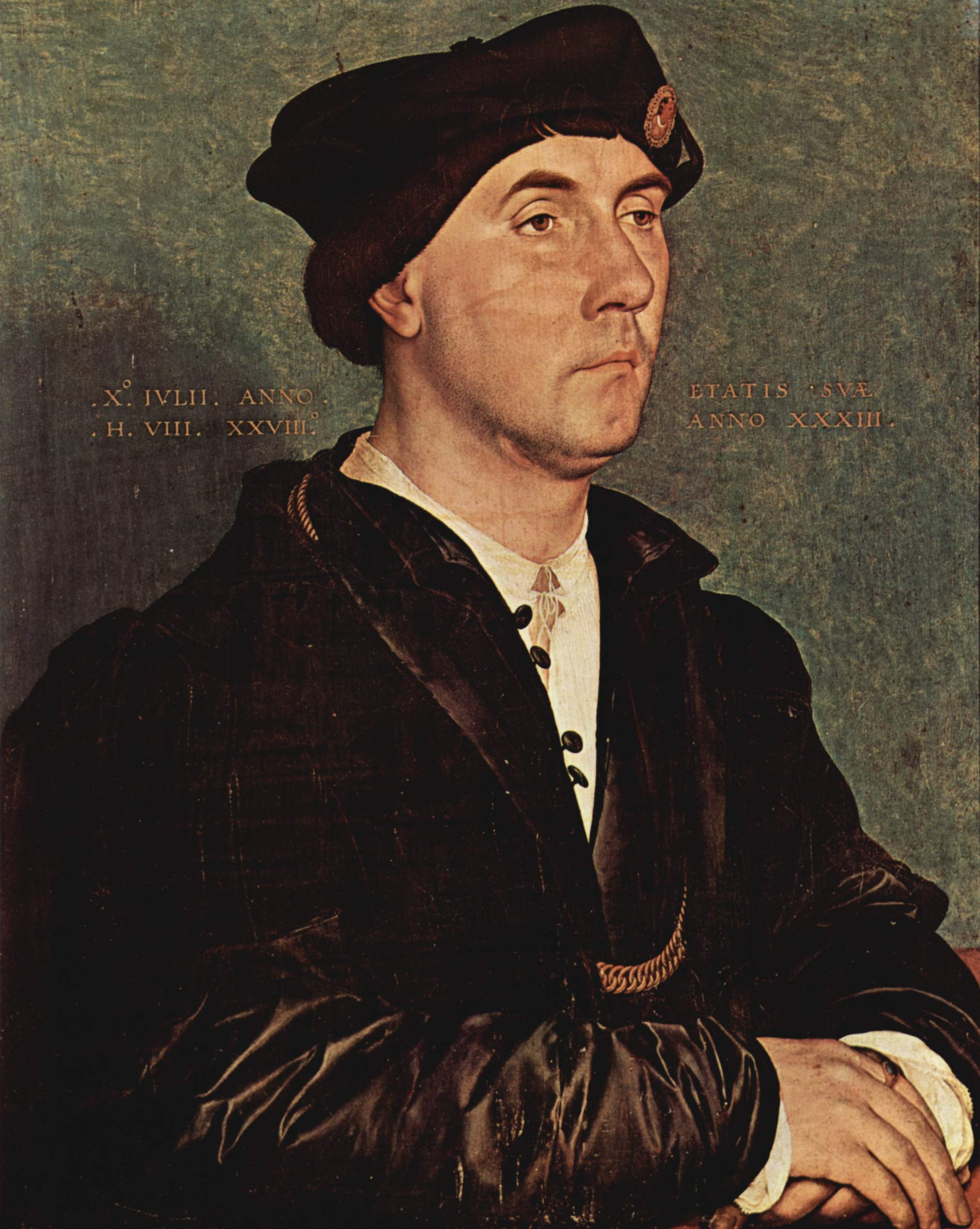Today, I am here to introduce to you a “human camera,” the pinnacle of portraiture, Hans Holbein the Younger.
“Human Camera” Hans Holbein the Younger
- Hans Holbein the Younger (1497-1543) was truly a “human camera.” His portraits were so lifelike that no one could compare to him. It can be said that the art of portraiture was “closed” with Holbein. Before him, many artists, such as Albrecht Dürer, Rogier van der Weyden, and Jan van Eyck, excelled in portraiture, each leading the field for decades. However, they were all generalist painters, while Holbein focused exclusively on portraiture throughout his life and elevated it to the peak of realism.
- The reason he is called “Holbein the Younger” is because his father was also a painter, known as Holbein the Elder. Holbein the Younger was born in Augsburg, southern Germany, and learned painting from his father from a young age. As an adult, he moved to Basel, a cultural center of the North at the time, and later relocated to England, where he spent much of his life. Holbein was the last famous German painter of the 16th century, and he had a significant influence on the British art scene, laying the foundation for the development of English painting.
- Holbein’s path to success can be seen as a reflection of the historical context of his time. As he worked tirelessly to become a master, the religious upheaval of the Reformation shattered his hopes. Led by Martin Luther, the Reformation opposed papal authority and gave birth to Protestantism, but it also adopted an extreme adherence to Biblical doctrines. One of the most important of these was the prohibition of idol worship, which not only banned sculptures of human figures but also forbade the painting of sacred images. This led to the first wave of “unemployment” among painters in European history, and Holbein was no exception.
- The ban on religious paintings was a massive blow to the art world of the time. Holbein had to find a new path, and fortunately, photography had not yet been invented. The wealthy class still had a demand for portraiture, and many artists turned to painting portraits as a new profession. Holbein, therefore, became a specialist in portrait painting. This shift to portraiture was a fundamental factor in his rise to the top, as it became his only option.
- Holbein’s portrait style was delicate, with deep observation and a commitment to 100% realism, leaving no detail unrecorded. What is most fascinating is that he never beautified his subjects; there is no dramatic enhancement in his work. At that time, royal nobles, especially the British monarchy, often had poor genes and were of short stature, and Holbein painted them as they truly were. For example, in his portrait of Sir Richard Southwell, known as “Secretary of State,” Holbein preserved the two scars on the subject’s face, indicating that he made no attempt to hide any flaws.
- Another testament to Holbein’s role as a “human camera” is his consideration of the viewer’s perspective. In his masterpiece The Ambassadors, which depicts French diplomats visiting England, the composition is divided into three layers. The first layer consists of objects like a globe, representing Heaven; the second layer features musical instruments, representing earthly life; and the third layer, representing Hell, includes a distorted skull. Holbein deliberately deformed the skull so that, when the painting was hung on the stairs and viewed from below, it would appear in its normal form.
- When talking about Holbein, we must mention the great man Erasmus, who was known as the “Petrarch of the 16th century.” Erasmus was the inventor of “liberal education” in Europe, dedicating his life to opposing empirical doctrines and rote memorization. He advocated for education tailored to individual needs, encouraged independent thinking, and introduced the concept of critical thinking. Erasmus wrote many works criticizing the Church, the most famous being The Praise of Folly. It is said that 20% of the total book sales across Europe at the time came from Erasmus’ works. Holbein’s portrait of Erasmus became his iconic image, and it has been passed down through history.
- Erasmus can be considered the “Lu Xun of Europe” of his time, and he had a profound influence on Holbein. It was through Erasmus that Holbein received a recommendation to the English royal family, securing a position at the English court. This job enabled Holbein to produce many of his remarkable portrait works, and it is thanks to this that we know the Holbein we recognize today.

Hans Holbein the Younger – “Portrait of Sir Richard Southwell”
In this portrait, the two scars on the subject’s face are preserved in full, demonstrating that Holbein never beautified his subjects.

Hans Holbein the Younger – “The Ambassadors”
The composition of the painting is divided into three layers: the globe and other objects symbolize Heaven, musical instruments represent earthly life, and the distorted skull in the third layer symbolizes Hell.

Hans Holbein the Younger – “The Ambassadors” (Detail)
The distorted skull was painted with consideration of the painting’s position above a staircase. Viewers looking up from below would see the skull in its normal form.

Hans Holbein the Younger – “Portrait of Erasmus”
Erasmus had a significant influence on Holbein’s career. Holbein’s portrait of him became the standard image for Erasmus, a perfect likeness that served as his official portrait.

Hans Holbein the Younger – “Portrait of Erasmus”

Hans Holbein the Younger – “Portrait of Erasmus”
Tip:
A Little Knowledge About Watercolor Paints
The most famous watercolor paints worldwide are called “Holbein Watercolors.” If you’re a painting enthusiast, I highly recommend using these paints.


